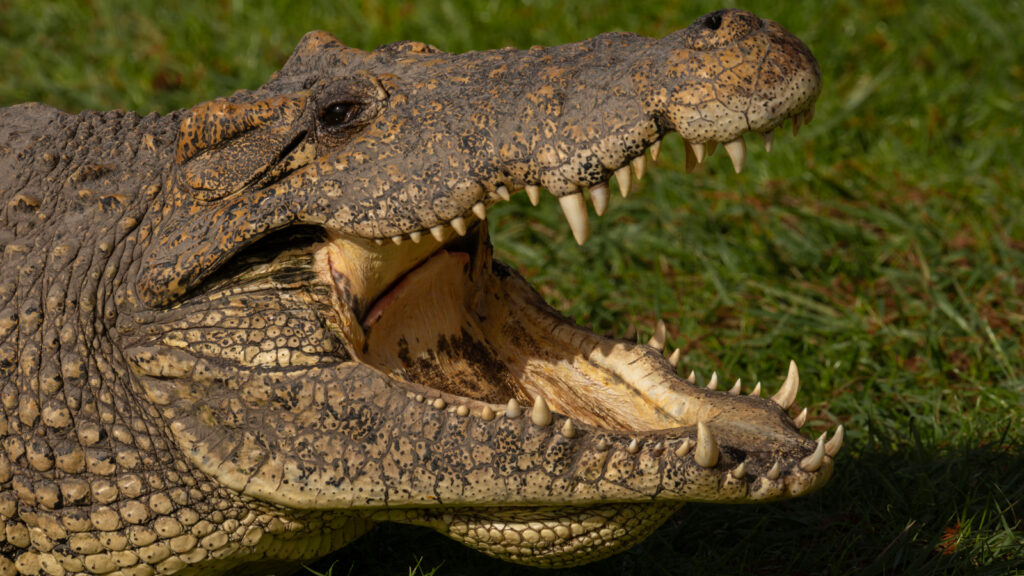iStockphoto / Carolyn Hutchins
Most people on earth have never heard about the Cuban crocodile and that’s a shame because this critically endangered species of crocodile might be the most interesting of all crocodilians. There are only an estimated 3,000 to 6,000 left and they inhabit just a tiny portion of the island of Cuba but you’ll soon find they are a fascinating species.
Cuban crocodiles (Crocodylus rhombifer), endemic to the island of Cuba, are primarily found near the Zapata Swamp and Isla de la Juventud which is a good thing for Cubans because herpetologists consider them to be among the most territorial of all crocodile species and pose a constant threat to humans in the area.
Until recently, I had never heard about this unique crocodile species which I found to be odd since I’m a born and raised Floridian who grew up just a few hours north of Cuba as the crow flies. With most species on earth there is some crossover between nearby subspecies and their territorial range isn’t limited to a swamp and an island but after learning more about the Cuban crocodile I’m thankful the alligators here in Florida (Alligator mississippiensis) because they are FAST.
Some say they run like horses. I see a more canine-style to their running. Regardless, these seem to be the crocodiles we were all warned about as children here in Florida when they taught us to run in zigzagging motions because these Cuban crocs can MOVE.
I found a video on YouTube titled ‘Cuban Crocodile Galloping Compilation’ which sticks with the ‘runs like a horse theme.’ The video has nearly 600K views, all presumably from people who like us had never heard about this species of crocodile until now and are astonished by how fast they are and how long their legs are:
Fun Facts About The Cuban Crocodile
Compared to American alligators, Cuban crocodiles are typically smaller. They range between 6.9 to 7.5ft in length with some of the older males growing up to 11ft long. These crocs weigh between 150-180lbs on average with some species reaching over 470 pounds.
This is unsurprising as Cuba is an island and creatures typically grow to the maximum size their environment allows. With a smaller range and fewer resources than alligators in North America, the Cuban crocodiles have remained smaller albeit faster and feistier.
I came across this video from Zeke Darwin, a science teacher in Kansas, who breaks down fascinating facts about the Cuban crocodile in response to a question he received about whether or not they might be distantly related to a dinosaur.
Sadly, this is a species classified as ‘Critically Endangered’ by the International Union for Conservation of Nature (IUCN). There are only an estimated 3,000 to 6,000 of them left in the wild in Cuba.
Numbers have dwindled due to habitat loss and hunting by humans. There are efforts currently underway to revitalize the population numbers through captive breeding programs but captive breeding with crocodile species can prove difficult.
Prior to habitat loss and population degradation, these crocs were also found in The Bahamas, Dominican Republic, and the Cayman Islands but now they can only be seen in the wild in those two aforementioned places on the island of Cuba.
The closes living relatives to the Cuban crocodile are the American crocodile, Orinoco crocodile, and the Morelet’s crocodile, all found here in the ‘new world.’ They tend to have more ‘pebbled scales’ than their relatives, longer/stronger legs, and they can book it.
Cuban Crocs Can Leap!
Did I mention that they can jump like dogs trying to catch a treat?!
If we want to go back millions of years, scientists believe (through the fossil record) these Cuban crocodiles hunted in packs and predated on the infamous giant Caribbean sloths… Imagine a whole pack of them charging you out of a swamp. That’s a ‘Code Brown’ for me. Not a clean/dry pair of pants in sight.
Like they relatives, they primarily feed on small prey including fish, turtles, and smaller mammals. Nothing really surprising there.
Interestingly, they are reported as ‘behaviorally dominant’ over American crocodiles when they have been observed coexisting. That’s because these are among the most aggressive crocodile species on earth and the American crocodile doesn’t want any of that smoke even though the American croc is, on average, considerably longer and heavier.
The more I learn about Cuban crocodiles the more I love them! Watch this specimen galloping through the grass and tell me this isn’t an incredible species:
I once again reiterate that I’m very glad we don’t have them here in Florida. We already have enough problems with the invasive Burmese pythons… Another croc species on top of American alligators and American crocodiles would be one too many for this peninsula.
Content shared from brobible.com.

